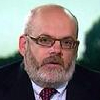PHILADELPHIA (MarketWatch) — The economic outlook, if not the weather, was sunny in Philadelphia this weekend, where the economics profession gathered for its annual conference and job fair.
Federal Reserve officials appearing here chose to spend little time stressing the positives like low unemployment and eight years of slow-but-steady economic growth.
Instead, officials started a serious conversation about what new tools they might need to combat the next downturn. The issue is likely going to be at the top of the agenda for new Fed chairman Jerome Powell.
Whenever the economy stumbles, it is taken pretty much as a given by economists here that the Fed will have to slash interest rates back to zero.
That means it may also have to restart quantitative easing, or asset purchases, that was so unpopular on Main Street and in Congress. This prospect causes some heartburn, so the central bank is casting around for new ideas.
“The Fed knows it will probably revisit the zero lower bound sometime in the future and it is a matter of prudent planning to shore up their tool kit now,” said Julia Coronado, president of Macropolicy Perspectives.
“You couldn’t pick a better moment for advance planning with the U.S. and global economies humming along and normalization well under way,” she said.
In comments to reporters following a speech at the conference, Philadelphia Fed President Patrick Harker said he thought it was a “worthwhile debate…of what should be our objective going forward.”
“There are a lot of options and we really need to think about those,” he said.
On the table is a strange-sounding policy called price-level targeting or raising its 2% inflation target to 4%.
“We, not just the Fed but the economics profession, need to have a pretty healthy debate about this. I think that would be healthy to have a very active and open debate about the pros and cons of each alternative,” Harker said.
‘I’m quite open-minded about this,” he added.
At the moment, the Fed targets an inflation rate. Under price-level targting, the Fed would target the level of prices. If the price level is low for a time, the Fed would need to allow inflation to run hot to get back to the price-level target.
The underlying idea is to convince the market that the Fed won’t be raising interest rates at the first sign of recovery, said Mark Gertler, economics professor at New York University.
Many times in the wake of the most recent financial crisis, investors thought a Fed rate hike might be imminent and pushed up long-term interest rates. This threatened the fragile recovery. In the end, the Fed held rates at zero for seven years.
In a separate speech at the conference, Cleveland Fed President Loretta Mester said she was open to studying new policy frameworks but said they all have downsides as well as upsides
She noted that price-level targeting depends on the public’s understanding the policy but also believing that future Fed officials would follow through, even in difficult times when the policy would call for higher rates to bring inflation down even if demand was weak.
Former Fed chairman Ben Bernanke has suggested that “temporary” price-level targeting might be the answer and only use the policy at the lower bound.
Read: Bernanke proposes temporary price-level targeting
But Mester said the drawback of this hybrid approach was that switching away from price-level targeting would be a complex process.
Mester, and St. Louis Fed President James Bullard in a separate speech, agreed with Harker that study of these new tools was appropriate.
“A move in this direction would require considerable debate and reflection, but might also confer substantial benefits to the U.S. economy if it could be implemented effectively,” Bullard said.



